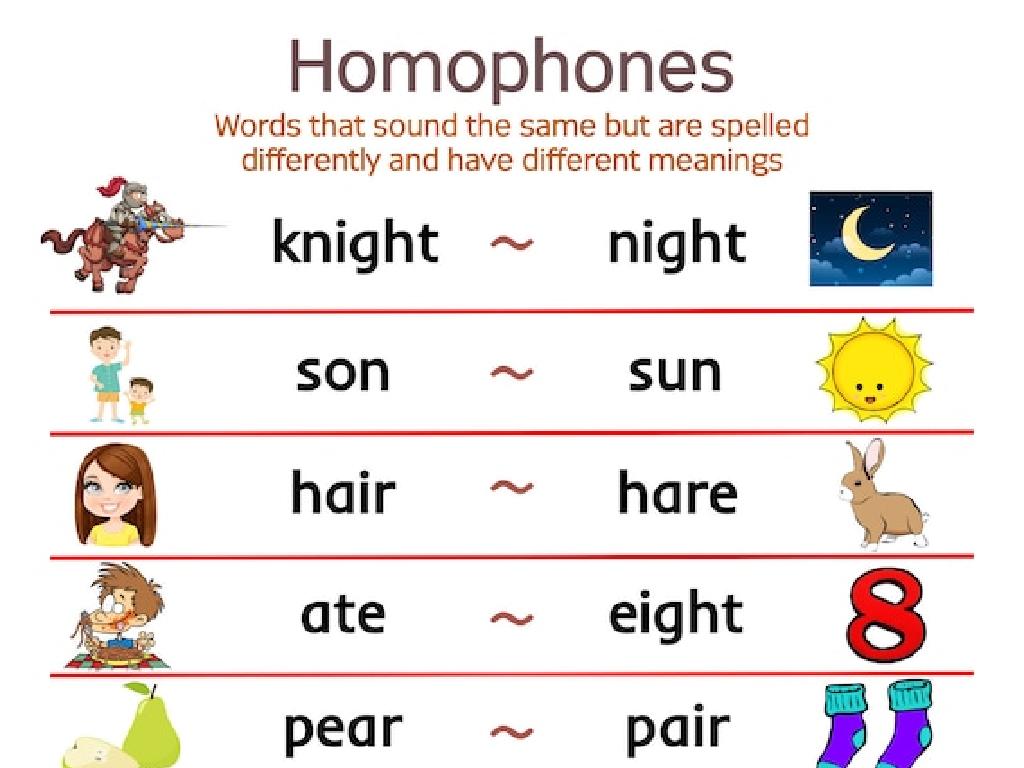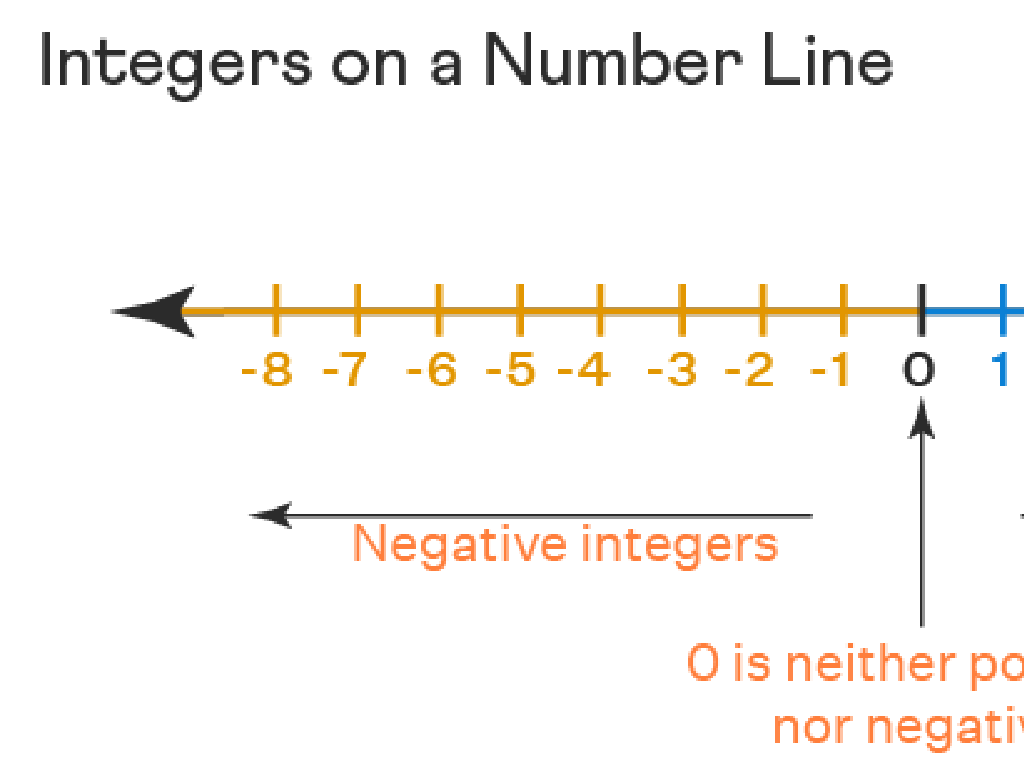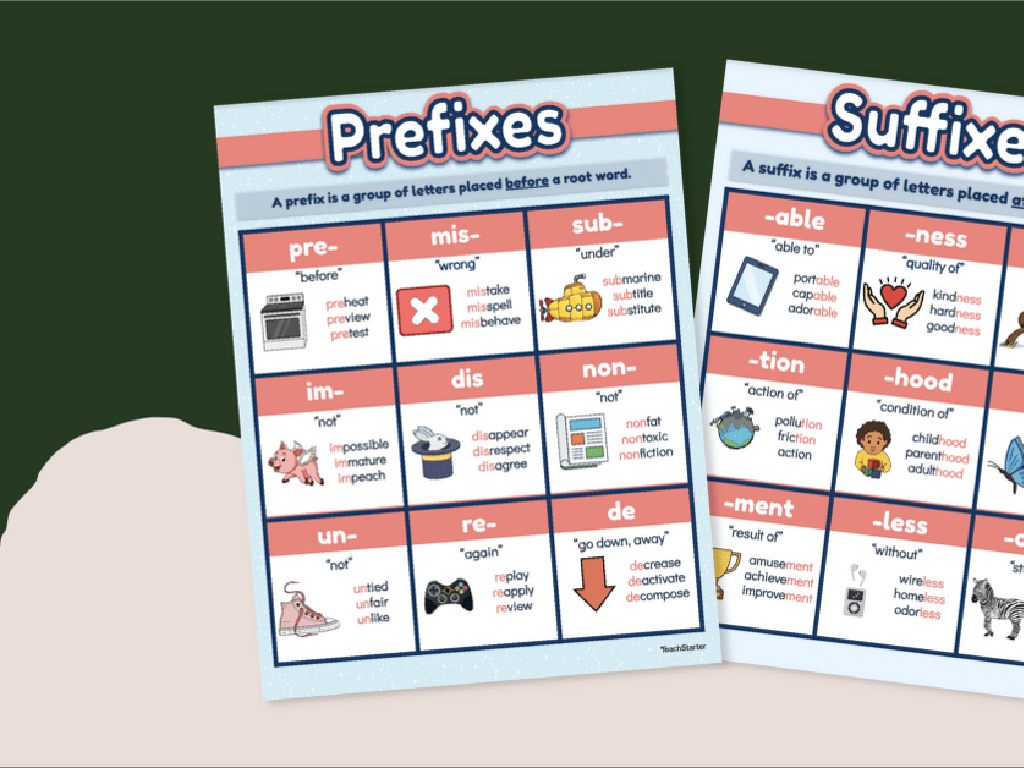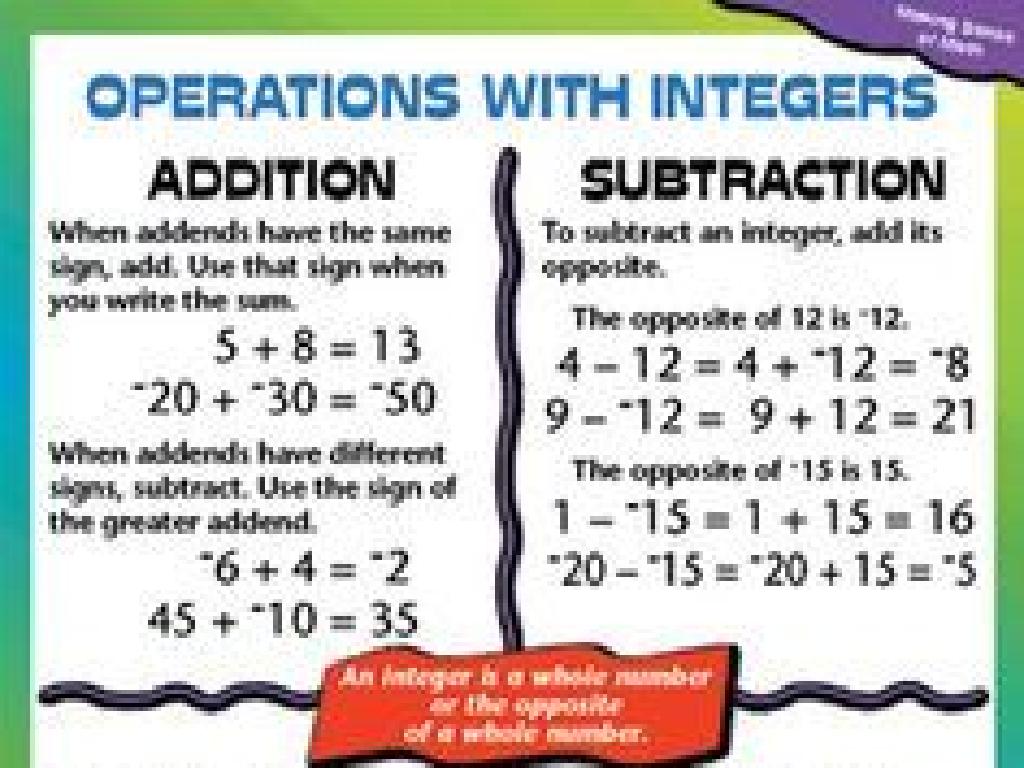Commas With Direct Addresses
Subject: Language arts
Grade: Fifth grade
Topic: Commas
Please LOG IN to download the presentation. Access is available to registered users only.
View More Content
Commas and Direct Addresses
– What is a comma?
– A comma is a punctuation mark used to pause or separate ideas.
– Commas in direct addresses
– Use a comma to separate the name of a person being spoken to from the rest of the sentence.
– Why commas matter
– Commas help clarify meaning and prevent misreading.
– Practice with sentences
– Let’s insert commas in example sentences for clarity.
|
This slide introduces the concept of commas, with a specific focus on their use in direct addresses. Begin by explaining what a comma is and its general use in writing. Emphasize the role of commas when directly addressing someone, such as in letters or dialogue, and how they help to separate the person’s name from the rest of the sentence. Highlight the importance of commas in avoiding confusion and ensuring sentences are understood as intended. Engage the class with practice sentences where they can apply commas to indicate direct addresses. This will help solidify their understanding through application.
Understanding Direct Addresses
– What is a direct address?
– It’s when you call someone’s name or title directly in a sentence.
– Identifying the listener in sentences
– Look for names or titles used in conversation within a sentence.
– Examples without commas
– ‘Let’s eat Grandma’ vs ‘Let’s eat, Grandma’.
– Practice spotting direct addresses
|
This slide introduces the concept of direct addresses in sentences, which is when we speak directly to someone by their name or title. It’s important for students to recognize who is being spoken to in a sentence to understand the use of commas for clarity. Without commas, the meaning of sentences can change dramatically, as seen in the provided examples. Encourage students to practice by reading sentences and identifying the listener. This will help them understand the necessity of commas in direct addresses to prevent confusion. Have students create their own sentences with and without direct addresses to see the difference punctuation makes.
Commas in Direct Addresses
– Commas clarify who is addressed
– ‘Let’s eat, Grandma!’ vs ‘Let’s eat Grandma!’ shows the importance of commas.
– Rules for comma placement
– Always place a comma before the name or title of the person being addressed.
– Examples: Right and Wrong
– ‘Good morning, class’ is correct, but ‘Good morning class’ is missing a comma.
– Practice identifying correct usage
|
This slide introduces the concept of using commas in direct addresses and how they can drastically change the meaning of a sentence. It’s crucial for students to understand that a comma can be the difference between a normal conversation and an unintended, often humorous, interpretation. The rules are simple but important: a comma should always precede the name or title of the person being spoken to. Provide clear examples of correct and incorrect usage, and then engage the class with practice sentences where they identify and correct mistakes. This will help reinforce the lesson and give students confidence in their punctuation skills.
Let’s Practice: Commas with Direct Addresses
– Identify direct addresses
– Find who is being spoken to in a sentence
– Add commas in sentences
– Place commas to set off the person or group being addressed
– Share answers with a partner
– Understand the use of commas
– Commas help clarify meaning and avoid confusion
|
This slide is for a class activity focused on the practical application of commas in direct addresses. Students will practice identifying the person or group being spoken to in a sentence, which is the direct address. They will then add commas to correctly punctuate these sentences. After completing the exercise, students will pair up to compare their answers, fostering peer learning. The teacher should circulate the room to assist and ensure understanding. Possible sentences for practice could include: ‘Could you pass the salt, Sarah?’ or ‘In the event of an emergency, students, please stay calm.’ The goal is for students to recognize how commas can change the meaning and clarity of a sentence.
Group Activity: Crafting Dialogues
– Write a dialogue in groups
– Create a short story with characters speaking to each other.
– Use commas for direct addresses
– Remember to place commas before the name or title of the person you’re addressing.
– Present your dialogue to the class
– Each group will take turns reading their dialogue aloud.
|
This group activity is designed to help students practice using commas in direct addresses within dialogues. Divide the class into small groups and instruct them to write a short dialogue where characters speak directly to one another. Emphasize the importance of using commas to indicate who is being spoken to. For example, ‘I’m glad you’re here, Sarah!’ versus ‘I’m glad you’re here Sarah!’ The first sentence correctly uses a comma before the name ‘Sarah,’ showing that the speaker is addressing her. After writing, each group will present their dialogue, allowing students to hear the proper use of commas in context. This activity will reinforce the lesson and provide a practical application of the punctuation rules.
Commas with Direct Addresses: Review & Quiz
– Recap comma usage rules
– Remember, we use commas to address someone directly, like ‘Wait, John, where are you going?’
– Engage in a short quiz
– Test what you’ve learned with a few questions
– Class discussion on answers
– We’ll go over the quiz answers together
– Reinforce learning outcomes
|
This slide is aimed at reinforcing the students’ understanding of using commas in direct addresses. Begin with a quick recap of the rules, such as placing a comma before a person’s name when speaking directly to them. Proceed with a short quiz to assess the students’ grasp of the concept. After the quiz, facilitate a class discussion to go over the answers, providing immediate feedback and clarification. This interactive approach helps solidify the students’ knowledge and allows them to learn from each other’s insights. Encourage participation and praise correct understanding to boost confidence.
Homework: Mastering Commas in Direct Addresses
– Write 10 sentences with direct addresses
– Use commas to set off the direct addresses
– For example: ‘Mom, can I go to the park?’
– Circle the direct addresses in your sentences
– This helps identify who is being spoken to
– Share your sentences in class tomorrow
|
This homework assignment is designed to reinforce the lesson on using commas for direct addresses. Students are tasked with creating sentences that include a direct address, which is when you call someone by a name or other identifying word. They must use commas correctly to separate the direct address from the rest of the sentence. Encourage students to be creative with their sentences and to use a variety of names and titles for their direct addresses. Remind them to circle the direct addresses to visually see the role commas play in their sentences. The next day, have a few students share their sentences to provide examples and discuss any common issues or questions that arise.
Wrapping Up: Commas in Direct Addresses
– Recap comma importance
– Commas help clarify who is being spoken to, like ‘Let’s eat, Grandma!’ vs ‘Let’s eat Grandma!’
– Encourage daily comma use
– Practice makes perfect! Use commas in journals, letters, and assignments.
– Homework reminder
– Complete the worksheet on commas for next class.
|
As we conclude today’s lesson, it’s crucial to emphasize the role of commas in direct addresses and how they can change the meaning of a sentence. Encourage students to incorporate commas in their daily writing to become more familiar with their usage. Remind them of the homework assignment, which is a worksheet designed to reinforce their understanding of commas in direct addresses. This practice will help solidify the concept and prepare them for more advanced punctuation usage in the future.






